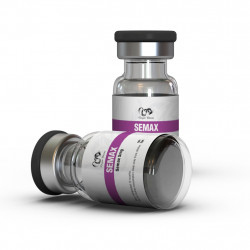


Alzheimer’s disease, recognized as a distinct condition by Alois Alzheimer in the early 1900s, is a progressive neurodegenerative disorder and discovery of amyloid beta (Aβ) plaques in the brain has driven research into Aβ aggregation, with metal ions like Cu2+ playing a key role in this process. In the last few decades, compounds like Semax which developed as a neuroprotective agent, has shown the ability to block Aβ
Sciacca, M.F.M., Naletova, I., Giuffrida, M.L. and Attanasio, F., 2022. Semax, a Synthetic Regulatory Peptide, Affects Copper-Induced Abeta Aggregation and Amyloid Formation in Artificial Membrane Models. ACS Chemical Neuroscience.
Disclaimer: Information provided it this page is for general information only and does not substitute for professional medical advice.
For detailed information about Semax by Dragon Pharma, consult with your doctor or healthcare professional.


Sciacca, M.F.M., Naletova, I., Giuffrida, M.L. and Attanasio, F., 2022. Semax, a Synthetic Regulatory Peptide, Affects Copper-Induced Abeta Aggregation and Amyloid Formation in Artificial Membrane Models. ACS Chemical Neuroscience.

Sciacca, M.F.M., Naletova, I., Giuffrida, M.L. and Attanasio, F., 2022. Semax, a Synthetic Regulatory Peptide, Affects Copper-Induced Abeta Aggregation and Amyloid Formation in Artificial Membrane Models. ACS Chemical Neuroscience.

Sciacca, M.F.M., Naletova, I., Giuffrida, M.L. and Attanasio, F., 2022. Semax, a Synthetic Regulatory Peptide, Affects Copper-Induced Abeta Aggregation and Amyloid Formation in Artificial Membrane Models. ACS Chemical Neuroscience.